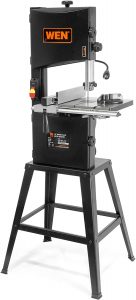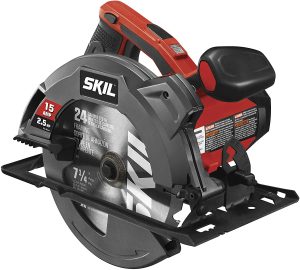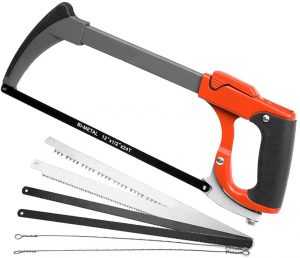Table of Contents
INTRODUCTION
If your next project involves cutting metal, and you are wondering how to saw metal or which tool to use, then you’d find out in this article. Although there are various hand tools available like tin snips or a regular metal cutting hacksaw, these tools aren’t for heavy use and may not produce clean results. They also require a lot of energy and patience. You can purchase a specially designed cutting saw instead. Saws that are designed to cut metal come in different forms, including chop saw, miter saw, circular saw, reciprocating saws, and band saws.
Although the above tools’ use and performance may be different, they all can easily and quickly saw through about any metal. There is a vast range of cutting saws available on the market today. They all are able to saw through metal, but most of them have their specific qualities, which makes them suitable for a particular job or application.
Metal cutting saws are saws that are specialized and can cut through almost any material, including steel framing, conduit, pipes, sheet, rebar, and angle iron. They also deliver accurate cuts that don’t need finishing before use.
An angle grinder designed with an abrasive metal-cutting disc also works very well in cutting all kinds of metals, including angle iron, bolts, and sheet metal.
BAND SAWS AND RECIPROCATING SAWS
These saws are specialized saws. Reciprocating saws are quite flexible and give you the ability to reach into tight corners. Although, due to the blade’s back and forth sawing movement, they are more suitable for demolition projects.

Band saws, on the other hand, are often referred to as an electrician or plumber’s saw. They possess a narrow cutting depth that is generally around 5,” but they are designed for easy use and are capable of cutting long, heavy stock like angle iron, rebar, and so on.
CHOP SAWS AND CIRCULAR SAWS
These saws are among the most versatile metal cutting saws and can take a wide range of jobs. Most of these saws may offer bevel options that will help you to slice through metal at an accurate angle. These saws make use of a metal cutting blade that cuts right through any metal material while spinning with little effort and great results.

HACKSAW
Hacksaw is the most common saw or tool used to cut metal. It is a C-shaped frame that is attached to a pistol grip handle. It has a slim but flexible blade that runs across the open side of the hacksaw’s frame. The blade’s teeth come in different sizes based on the application. The most significant disadvantage of a hacksaw is that it takes up much more time and effort to cut through metal., Although a hacksaw is still an excellent tool for DIY. Blades for hacksaws are also readily available, affordable, and have different teeth. Using a hacksaw may require a lot of effort, but if you keep the blade moving straight when cutting and also apply a little cutting oil, then the hacksaw is quite useful.
METAL CUTTING BLADES
Metal saws are powered by a motor that creates a blade speed in RPMs that is suitable for cutting through metal. They are used along with metal cutting blades. You should make sure to choose a blade that is ideal for the material or job at hand. Blades with lesser teeth and more expansive spaces between them are suitable for cutting soft metals like aluminum and so on. In comparison, blades with more teeth and less space between them make slimmer cuts, which are perfect for sawing through heavier materials like steel and iron.
Also see; best metal cutting saws and what are metal saw blades made from
Abrasive discs are also metal cutting blades. They are coated with a mineral grit that makes them capable of withstanding heat build-up and cut through metal neatly.
Both hand saws and power saws are used to cut through materials. Builders mostly choose a saw and blade based on the composition of the metal, the type of cut, and the size of the material. For example, the blade and tool that is used to cut a soft metal like aluminum are different from the blade and tool that is used to cut a hard metal like steel alloy.
For jobs were you need to cut the material off fully, like tubes, beams, and so on. A band saw or a chop saw that is tipped with carbide is suitable for the application.
For extreme angles, It is recommended that you make use of a saw that is abrasive to chop steel. You can make use of a die grinder or a circular saw that is handheld.
CONCLUSION
Cutting through metal is relatively easy when you have the right tool. It requires you to know what planning to do and which type of saw or blade is ideal for the application. Make sure you consider the kind of cut you want to achieve and the size or type of blade ideal for it, also taking into consideration the price and quality.

